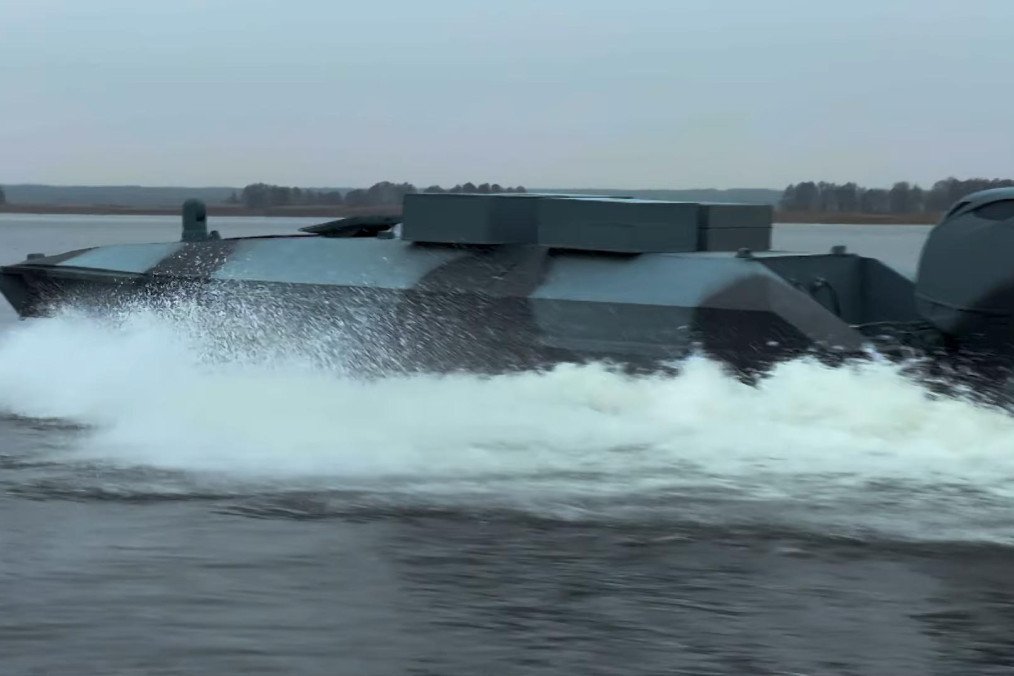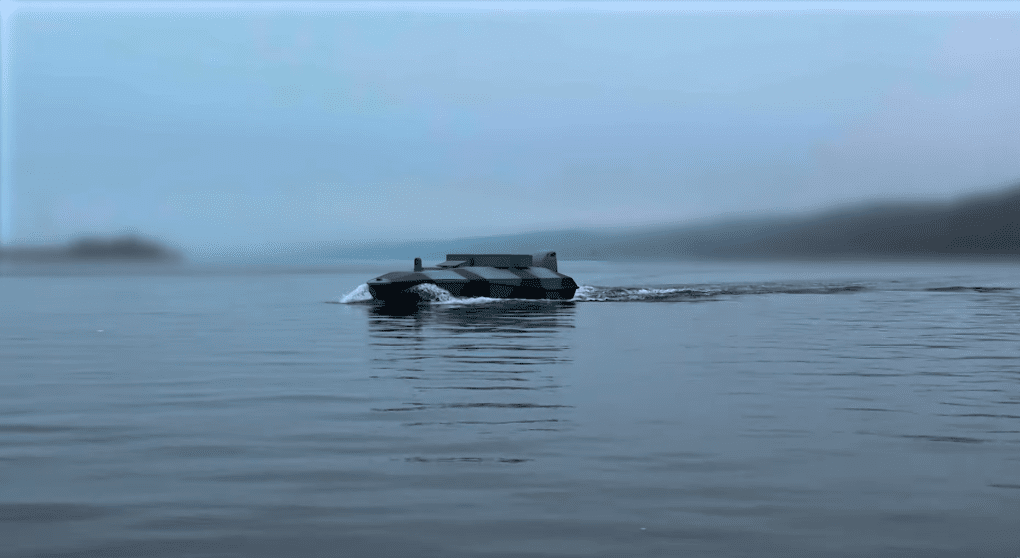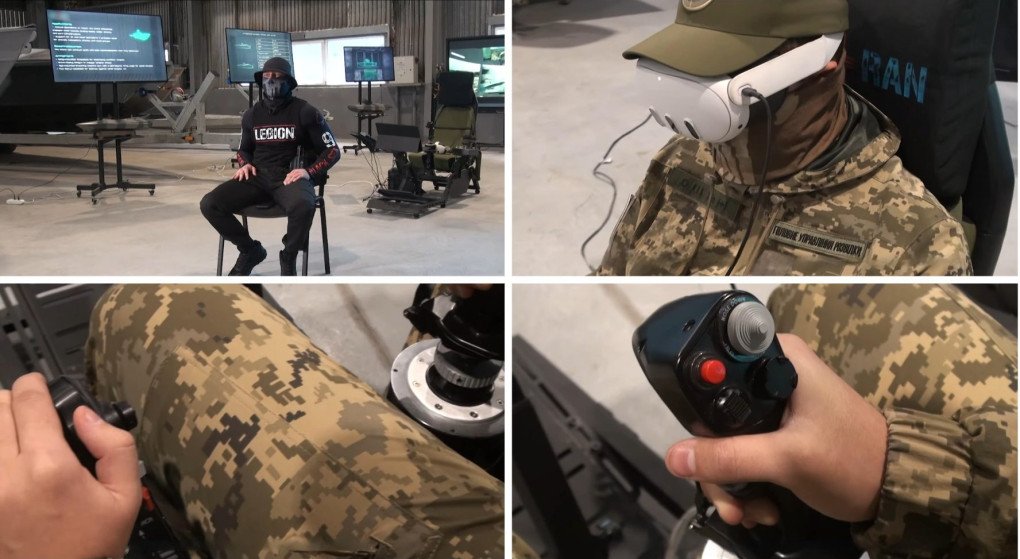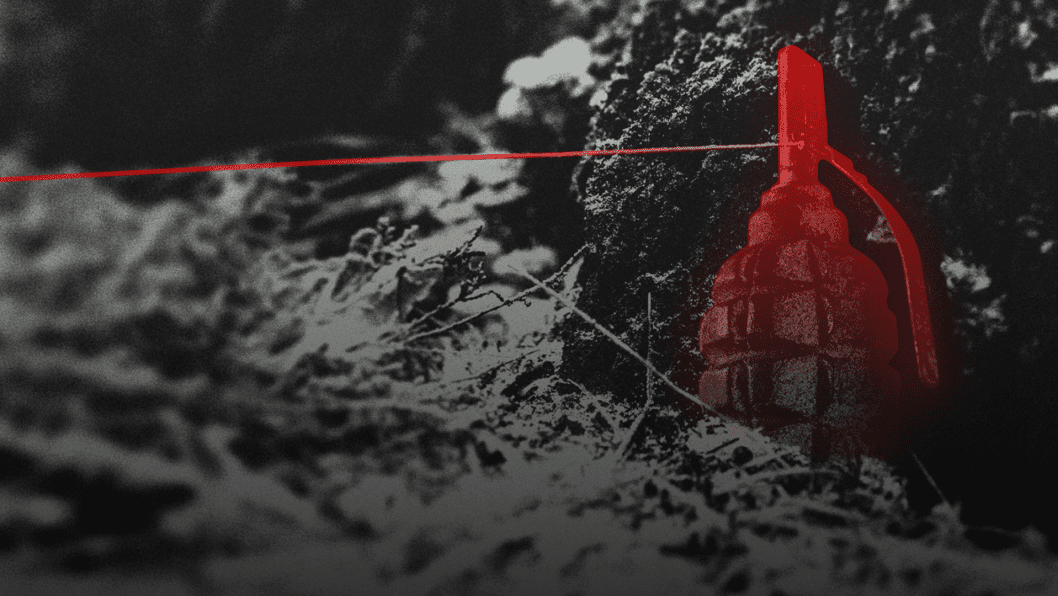- Category
- Latest news
Ukraine Reveals Advanced Naval Drone Carriers Used in Strikes on Crimea

The Main Intelligence Directorate of Ukraine (HUR) is deploying at least two types of unmanned surface vessels for strike operations in the Black Sea, as showcased in Artem Shevchenko's documentary "Naval Combat: The Drone Era," according to Militarnyi.
he HUR is building a fleet of marine drones, with unmanned platforms designed to launch suicide drones, enabling them to target both ground and highly maneuverable surface targets.
Exclusive footage from the documentary showed two marine drones with significant design differences from the familiar Magura V5 strike drones. The first drone uses a conventional boat engine with blades instead of a water jet and can carry four containers with ready-to-launch FPV drones.
“Our marine platform can carry between 500 kilograms (1,102 lbs) and 3,000 kilograms (6,613 lbs) of various types of weaponry—airborne, surface, and subsurface. The system uses cutting-edge technologies, integrated with NATO-style artificial intelligence,” explains a HUR special operations officer involved in deploying these drones, cited by Militarnyi.

Another unnamed drone carrier was presented in low-quality footage, revealing a different hull shape and equipped with a launch system for four aircraft-type strike drones.
It is highly likely that this particular marine drone carrier has been used repeatedly to deliver payloads to Crimea's coastline in operations by the Prymary unit of the HUR. In April, it successfully struck several Russian combat boats and the "Tor-M2" surface-to-air missile system in the occupied peninsula's waters.
Both platforms feature Starlink satellite internet antennas, extending the operational range of the marine drones.
In addition to the drones, the intelligence unit also revealed a control station for the marine platform, complete with an operator's chair and controls resembling an aviation steering wheel and a throttle for speed regulation.
The steering wheel of the unmanned vessel features several buttons, one of which likely controls the bow tilt. Images from both day and night cameras are shown on the operator's augmented reality glasses, with a duplicate display on a monitor behind, possibly for briefing other officers at the command center.

Using augmented reality glasses instead of traditional monitors allows the operator to merge images from multiple cameras into a single wide-angle view. Additionally, the system includes a display from a thermal imaging camera located in the bow and aft cameras.
According to the intelligence officers, the introduction of drone carriers has opened up opportunities not only for precise targeting of ground objectives but also for providing air cover during large naval operations. This is a significant advantage, as HUR special forces are actively conducting sabotage group landings behind enemy lines and raiding operations in the Black Sea.
Previously, it was reported that Russia has increased the deployment of S-300 and S-400 air defense decoys in its Far East region, according to new satellite imagery reviewed by open-source intelligence sources.





-72b63a4e0c8c475ad81fe3eed3f63729.jpeg)


